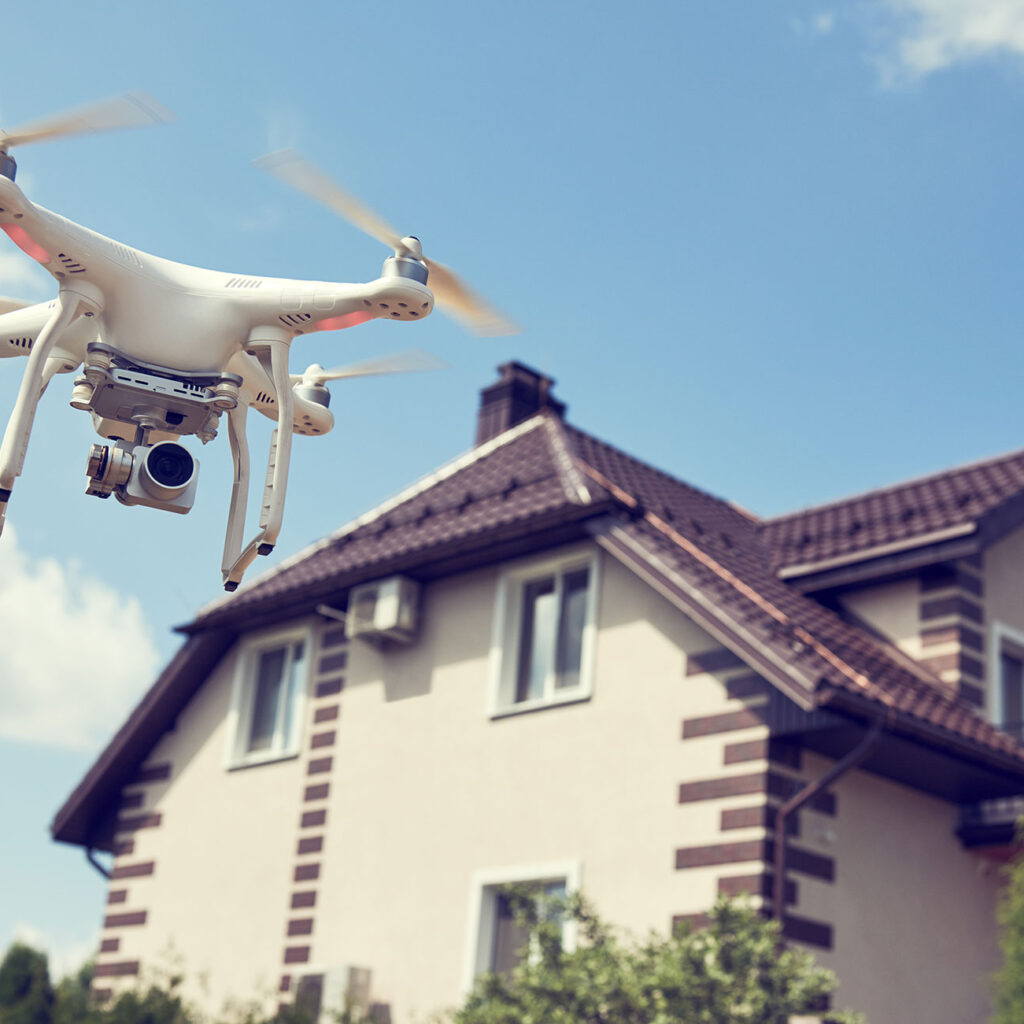Drones in the Real Estate Industry

Real Estate is the second largest industry for drone use, after aerial photography, which is easy to understand when viewing the compelling aerial photos and videos used by many realtors today. Drones are technically referred to as UAVs, “Unmanned Aerial Vehicles,” or when referring to the drone and ground controller unit, an “Unmanned Aircraft System” (UAS). Today, UAVs are affordable, easy to operate, and highly maneuverable. Though a pilot’s license was once necessary for commercial drone use, the FAA now allows operation with a remote pilot certificate (FAA Section 107 regulations).
How and Why Drones Benefit the Real Estate Industry
Differentiating property listings by offering high-quality aerial photography and video is a hot button for realtors today. Statistics show homes with aerial images sell 68 percent faster than houses marketed using stock photography. Here are nine ways in which real estate agents and brokers are benefiting from drones:
1. Drone photography offers dramatic, captivating images.
Modern drone technology allows real estate professionals to create unique shots quickly GPS-programmed flight paths combined with automatic point-of-interest camera targeting results in professional and appealing views.
2. Drones can shoot engaging virtual tours.
A camera drone can fly throughout a home or office building and travel through each room, creating a detailed virtual tour that stationary photography cannot capture. Today’s video editing software allows agents to create a professional voice-over soundtrack, giving the potential buyer a rich and compelling visual story.
3. Drone photography can show enhanced features of the property.
Aerial photography can capture landscaping shots, outdoor living areas, pools, hot tubs, walking paths, nearby parks, local schools, and other exciting features that potential buyers want to see.
4. Drone photography attracts sellers and will generate new business for the real estate agent.
Using drone photography and videos to market properties is a huge selling point for prospective sellers who want their property presented in the best way possible.
5. Drones provide realtors with a competitive edge.
Real estate listings with drone-produced images and video outperform listings that only offer traditional photos, resulting in increased sales for the agent.
6. Drones are a cost-effective alternative.
Drones are inexpensive to purchase and use. Or realtors can cost-effectively outsource aerial photography to professional drone operators.
7. Drones offer a high-level impact on luxury homes.
Drone photography can highlight a waterfront view, a beautiful garden, expansive grounds, unique swimming pools, or water features. Aerial drone photography can capture the elegance of a high-end property in a way that no other photography method can.
8. Drones offer advantages for commercial real Estate and property development.
Drones are used to plan high-rise apartments and other residential multi-unit projects. They are used to inspect, survey, and market the property to potential buyers and for aerial overviews of the land to be developed and surrounding neighborhoods.
9. Drones aid in the roof and home inspections.
A drone allows inspectors to identify roof and other issues in ways that a ladder never would. Beyond offering a safer inspection solution, they can readily identify lifting shingles, bent flashing, or chimney-related problems.
Current FAA Regulations
All drones weighing more than a half pound (0.55 lbs.) must be registered with the FAA. Registering drones is only $5, but the fine for using an unregistered drone can be $25,000 per UAV. Current FAA guidelines include the following:
No drones may be flown within 5 miles of an airport or terminal.
Written permission is required from each person before drones can fly over or photograph them.
Commercial drones are limited to an altitude of 400 feet.
Drone pilots must remain in sight of the drone they are operating.
All operators must secure a drone/UAV operator’s license from the FAA.
Risk Protection for Realtors
While drone photography has a shallow risk of damage and injury, some risks are involved. Every drone operator should carry commercial drone insurance. Most drone operators should consider both accidental and liability insurance. Many real estate companies require a minimum of a $1 million limit of liability for third-party operators. There are several types of coverages applicable to drones, including:
Drone Liability Insurance
Hull Insurance (damage to the actual drone)
Drone Payload Insurance
Ground Equipment Insurance
Drone liability insurance protects the operator and company from third-party claims or property damage. Some policies may extend their insurance coverage to financial loss protection associated with negligence and invasion of privacy. Every realtor using drones should review their coverages to ensure they are protected when using this growing technology.
